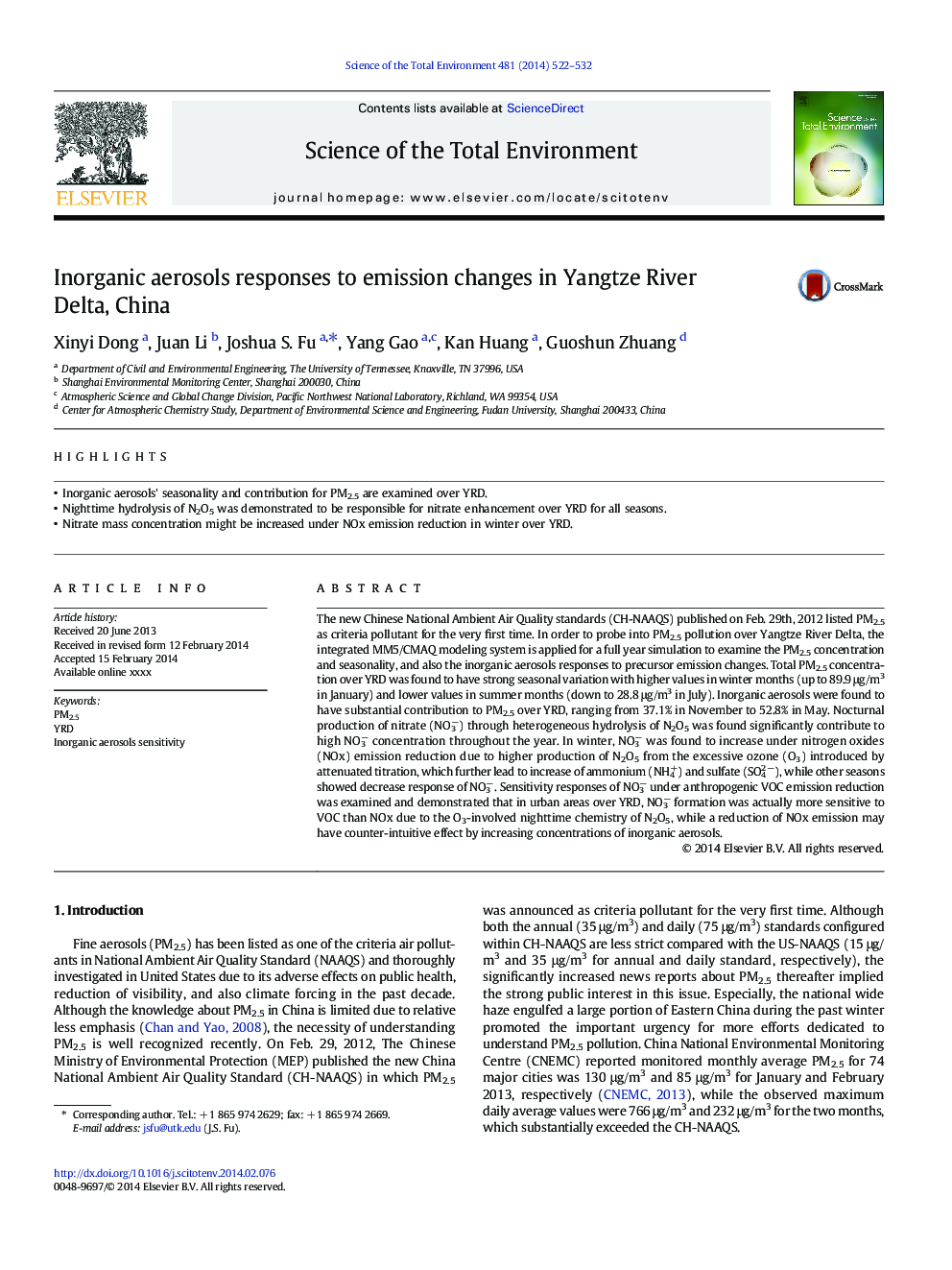| Article ID | Journal | Published Year | Pages | File Type |
|---|---|---|---|---|
| 6330895 | Science of The Total Environment | 2014 | 11 Pages |
Abstract
The new Chinese National Ambient Air Quality standards (CH-NAAQS) published on Feb. 29th, 2012 listed PM2.5 as criteria pollutant for the very first time. In order to probe into PM2.5 pollution over Yangtze River Delta, the integrated MM5/CMAQ modeling system is applied for a full year simulation to examine the PM2.5 concentration and seasonality, and also the inorganic aerosols responses to precursor emission changes. Total PM2.5 concentration over YRD was found to have strong seasonal variation with higher values in winter months (up to 89.9 μg/m3 in January) and lower values in summer months (down to 28.8 μg/m3 in July). Inorganic aerosols were found to have substantial contribution to PM2.5 over YRD, ranging from 37.1% in November to 52.8% in May. Nocturnal production of nitrate (NO3â) through heterogeneous hydrolysis of N2O5 was found significantly contribute to high NO3â concentration throughout the year. In winter, NO3â was found to increase under nitrogen oxides (NOx) emission reduction due to higher production of N2O5 from the excessive ozone (O3) introduced by attenuated titration, which further lead to increase of ammonium (NH4+) and sulfate (SO42 â), while other seasons showed decrease response of NO3â. Sensitivity responses of NO3â under anthropogenic VOC emission reduction was examined and demonstrated that in urban areas over YRD, NO3â formation was actually more sensitive to VOC than NOx due to the O3-involved nighttime chemistry of N2O5, while a reduction of NOx emission may have counter-intuitive effect by increasing concentrations of inorganic aerosols.
Related Topics
Life Sciences
Environmental Science
Environmental Chemistry
Authors
Xinyi Dong, Juan Li, Joshua S. Fu, Yang Gao, Kan Huang, Guoshun Zhuang,
